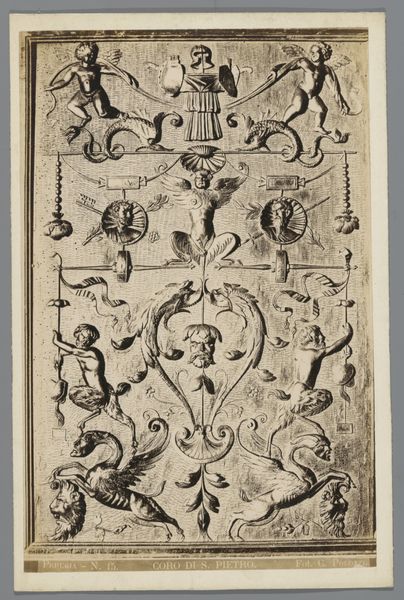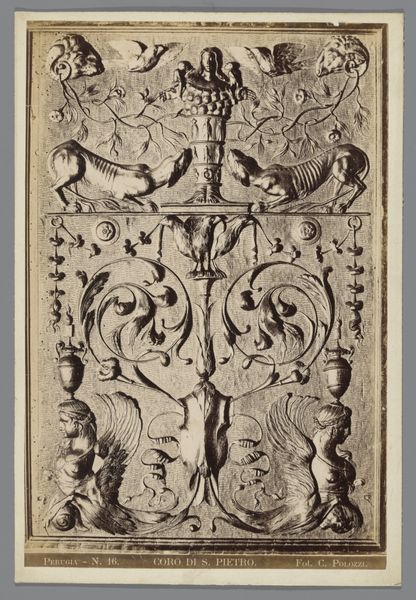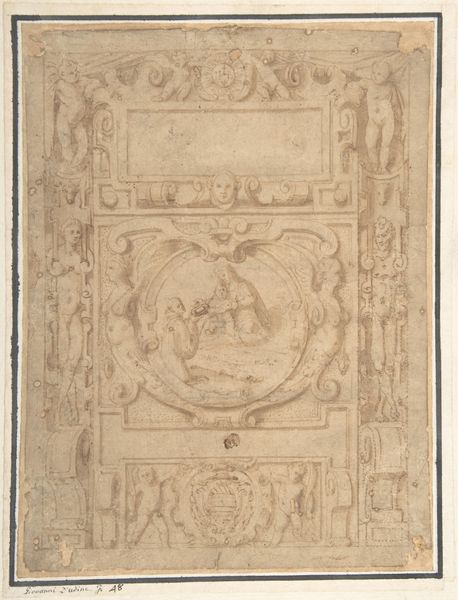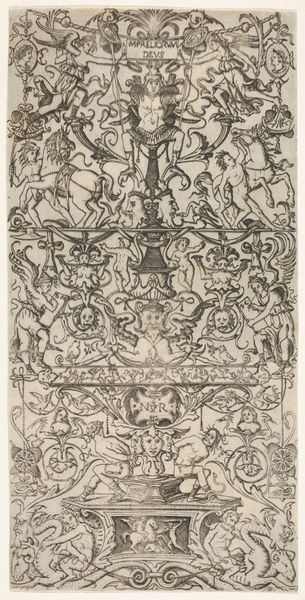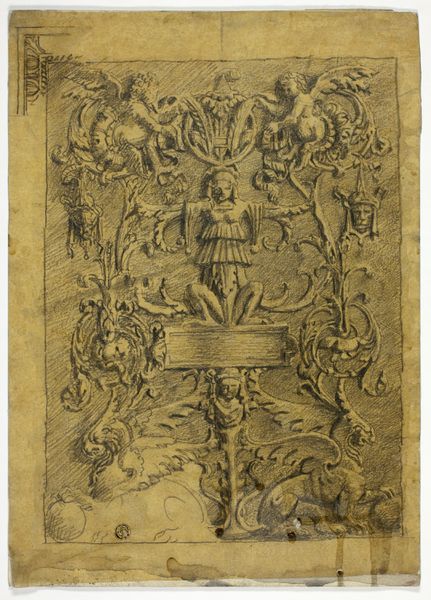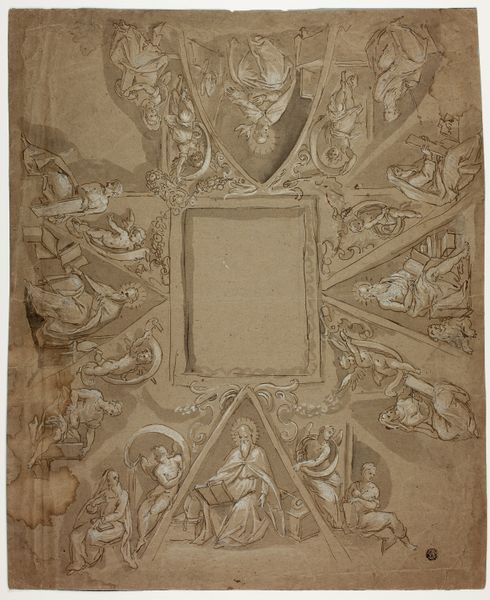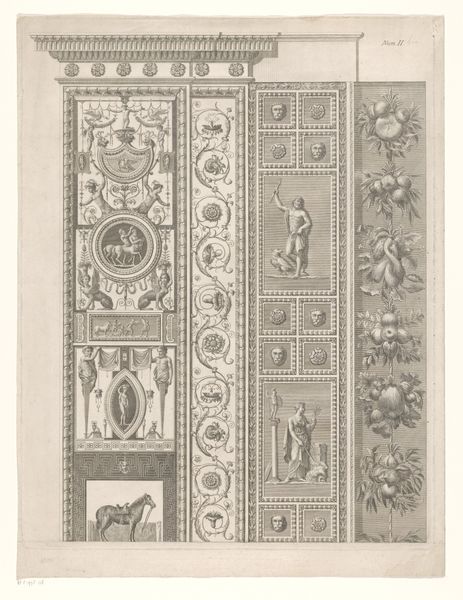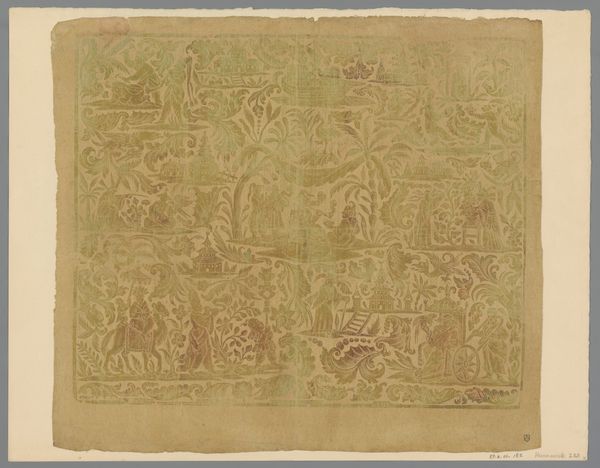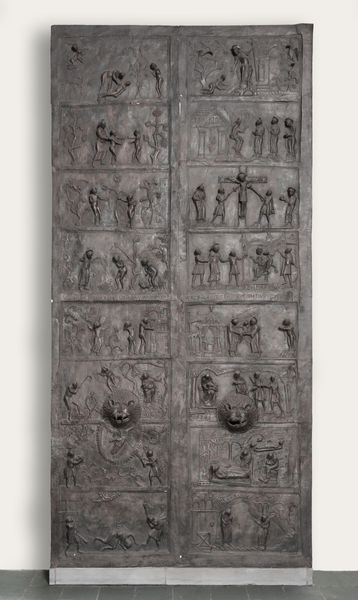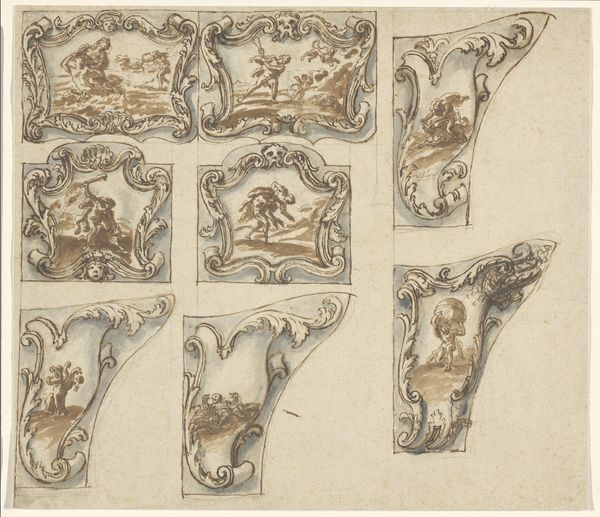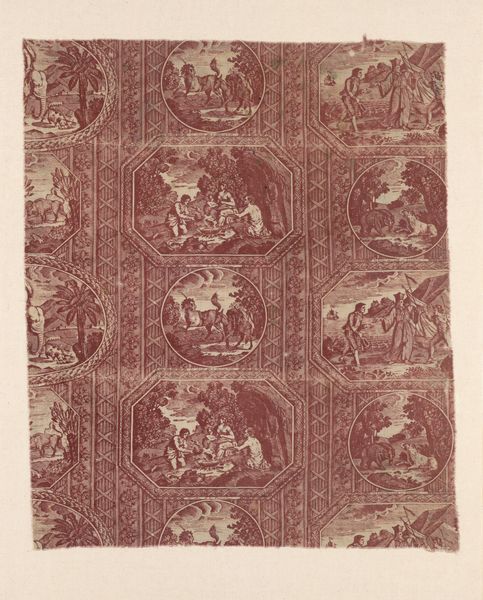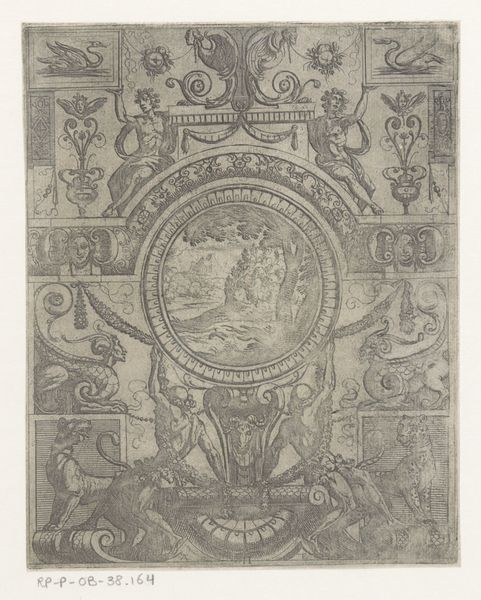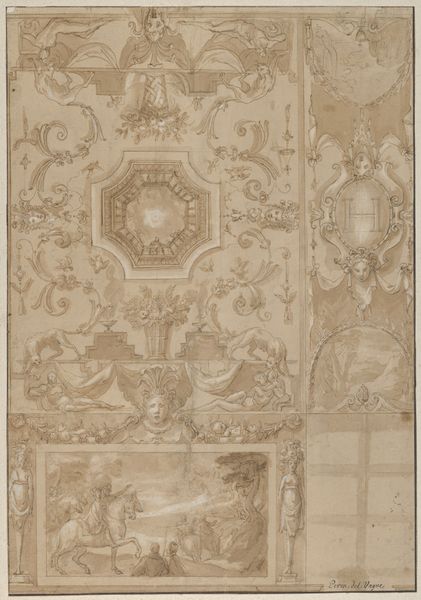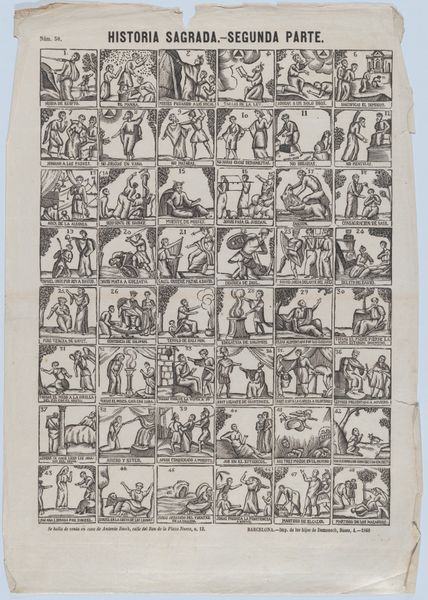
print, weaving, textile, ink
#
portrait
#
narrative-art
#
ship
# print
#
weaving
#
textile
#
text
#
ink
#
child
#
horse
#
france
Dimensions: 316.2 × 85.1 cm (124 1/2 × 33 1/2 in.)
Copyright: Public Domain
Art Historian: Before us is a furnishing fabric titled "Fables of Fontaine," dating back to around 1815. It was crafted by Hartmann et Fils in France. Art Historian: At first glance, it evokes a feeling of nostalgia, doesn't it? The sepia tones and dense patterning remind me of aged tapestries whispering tales of the past. Each small scene feels like a fragment of memory. Art Historian: Absolutely. As a furnishing fabric, pieces such as this would have shaped the domestic environment for the French elite, reflecting cultural values and status. Woven textiles of this nature presented not just aesthetic beauty, but also acted as didactic tools. Art Historian: Indeed. I see framed vignettes showing various animals, figures with horses, and other forms I associate with the famed Fables. Considering how influential La Fontaine's allegories have been for centuries, the repeating of his narratives indicates deep societal imprint and constant reinforcement of moral and ethical values. The horse motif, for instance, can be seen as a symbol of power, strength, but also controlled wildness—characteristics linked with noble virtues in the past. Art Historian: Yes, these textiles served almost as wallpaper, subtly conveying the values upheld within that society. We should consider that during the post-revolutionary period in France, there was an explicit effort to re-establish societal order through different forms of visual rhetoric. To achieve such an influence meant repeating narratives throughout one's life in one’s surrounding. Art Historian: The decision to frame the images—with their different shapes and sizes—might point at individual interpretation or personalized moral taking. Even if you have a uniform piece of art, it ends up carrying individual, or highly personal, meaning when repeated constantly. Art Historian: Precisely. Even today, domestic designs function as reminders and personal cultural tools. It seems fabrics were consciously produced to both comfort and instruct its user about France's national story and shared identity. Art Historian: Examining objects like this helps us decode both conscious and unconscious cultural transmissions—messages interwoven within society’s fabric. Art Historian: Agreed. It highlights how art and design played, and continues to play, a key public role in shaping how societies function and preserve. Art Historian: A lovely piece to reconsider visual inheritance. Art Historian: Indeed. A window into France's intricate, textured history.
Comments
No comments
Be the first to comment and join the conversation on the ultimate creative platform.
